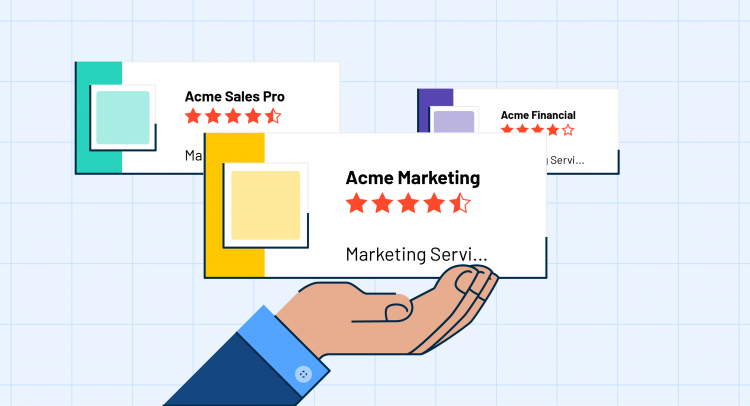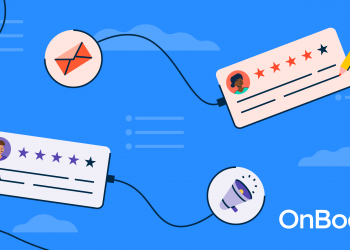Software vendors don’t typically become enterprise-level organizations by focusing on a single product.
Success can come from a core offering, but that’s not enough for sustainable growth. These brands can only reach such highs through a rigorous understanding of their market and buyers.
But buyers have much more to consider when their vision expands from one product to a family of products.
For companies that want to expand business with existing customers while also acquiring new ones, bundling their products together provides a tremendous opportunity. However, closing these bigger deals won’t come easy.
In this article, we’ll cover how you can successfully win over customers to buy into your complete suite of products. Let’s dive in, and you’ll be on your way to living the “suite life”.
What is a product suite?
Product suites are combinations of products from a single vendor that may offer an advantage to businesses through an expanded range of features and functionality, prebuilt integrations, and simplified vendor relationships.
The term is more common in the B2B software space as many vendors carefully design their product suites to be a comprehensive solution for a broad range of business challenges.
For example, let’s say you’re the founder of a customer relationship management (CRM) software company that serves local businesses like dental offices, auto mechanics, and more. Your company saw early success with a core CRM, but eventually offered additional products like an email marketing tool, a website builder, and an AI messenger bot.
All of these products are sold individually and stand on their own. When they come together in one solution, they create a more robust offering for these small businesses.
A history lesson from the Microsoft Office Suite
Microsoft Office is nearly universal for most PC users across the globe. But at one time, Microsoft Office wasn’t such a dominant force in the workplace.
In the late 1980s to early 1990s, Microsoft had its fair share of competitors, but when the company first bundled up Word, Excel, and PowerPoint, a fierce battle to win over the market began. Competitive software like WordPerfect’s word processor and Lotus’s 1-2-3 spreadsheet were each popular on their own. However, Microsoft was onto something.
Microsoft’s big competitors Borland, Lotus, and WordPerfect scrambled to join forces and put together their own product suite. Unfortunately, these partnerships eventually sputtered due to several legal battles among these competitors.
One part of Microsoft’s success came from the fact that enterprise software buyers preferred to purchase software with better cross-compatibility and similar graphic interfaces.
Over 30 years later, Microsoft still has the most used office suite of software on the planet. But even this product suite has changed with the times, offering more flexibility for more buyers depending on their needs.
The power of product suites for enterprise organizations
The modern B2B software world is much different from that of the early 1990s. From longer sales cycles to an increasing number of stakeholders and buying committees, selling to buyers is only getting tougher.
Organizations are becoming more sensitive to software costs with inflation on the rise and many companies preparing for an impending market downturn. Despite this, enterprise companies can benefit significantly from product suite offerings.
For one, product suites are an excellent way to expand existing relationships with customers who already buy from you. Getting them in the door with a single product opens up the chance of scoring larger deals and more revenue without contributing to acquisition costs.
Second, product suites help elevate your brand to earn the recognition of being a more holistic solution approach.
3 tips to win over buyers
We know that B2B software vendors face unique challenges on top of current events and market sentiment. However, by keeping a few things in mind, any enterprise software company can successfully convince buyers why they need a complete product suite.
1. Create a cohesive experience
Since single products are often the entry point for buyers, the other products in the suite need to be just as valuable. A few common ways to achieve this include:
- Expanding features and functionality
- Simplifying vendor relationships
The point here is to build upon the success of each product to become even more comprehensive when used together. The exclusivity of these expansions goes a long way toward making it feel like a more cohesive experience.
2. Favor pricing transparency
One of the biggest challenges with promoting product suites comes back to pricing. The more products your suite includes, the more confusing it can be for buyers.
Pricing transparency is generally a good thing for vendors to consider, but this can be difficult to achieve from an operational and sales perspective. This complexity can arise based on your SaaS software pricing model, but if possible, consider whether this removes potential hesitation for your customers and prospects.
3. Reduce complexity in messaging
Maturing enterprise software vendors often have countless products they provide for customers. The more products you have, the more information you have to convey. Keep in mind that a good principle in your sales and marketing is the simplicity of your messaging.
As any sales representative will tell you, being able to speak the language of software sales isn’t something you pick up overnight. The more products, features, and functionality your product suite offers, the more difficult it is to get the messaging just right.
Companies can solve this issue through initiatives like tightening up marketing and sales enablement content, but prioritizing impactful messaging should be a guiding compass for how you talk to buyers about your product suite.
Introducing G2 Product Suites
As the leading marketplace for B2B software, there’s a reason why G2 continues to play a crucial role in the decision-making process for buyers. According to the 2022 G2 Software Buyer Behavior Report, buyers trust vendor sales teams less and less, whereas user-generated content and review sites are becoming more influential.
76%
of respondents think product and service review websites are trustworthy or highly trustworthy.
Source: G2
And because G2 is where you go for software, we’re proud to announce a new offering: G2 Product Suites.
Built to better showcase how sellers sell and buyers buy, Product Suite Profiles provide a streamlined singular view of a vendor’s full line-up of products. This dedicated view is a one-stop shop for buyers and sellers to view reviews, pricing, and information across all products from one place.
Ultimately, the launch of Product Suite Profiles showcases the power of a full suite, cloud, or platform offerings on G2.com – which in turn supports vendors in their goals of elevating brand presence and closing larger deals.
Focusing on full-service solutions to close larger deals
By leveraging these top considerations in tandem with G2 Product Suite Profiles, sellers can effectively execute better conversations with customers and share related products or solutions needed to achieve their goals.
Utilizing Product Suites will be one of the “suitest” ways to elevate your brand and increases demand on G2.com.
Find and claim your Product Suite profile on G2.com today by checking out this resource.
Source by learn.g2.com










